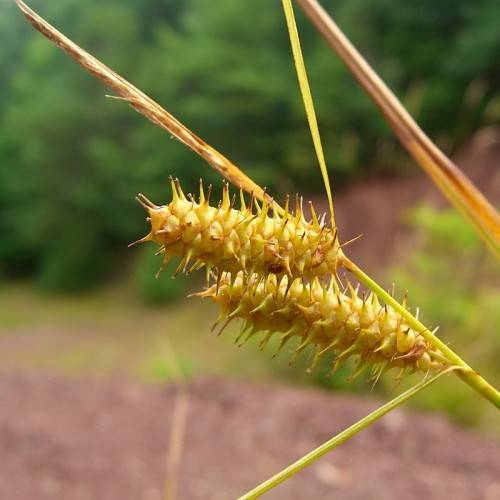
Bailey's Sedge
Carex baileyi
Watering:
Average
Hardiness Zone:
Flowers:
Flowers
Sun:
full sun,part sun/part shade
Soil:
Sand, Loam
Leaf:
Yes
Growth Rate:
Low
Drought Tolerant:
Yes
Salt Tolerant:
Yes
Invasive:
Yes
watering
Golden Fruit Sedge prefers moist soil conditions, and as such should be watered when the top 2 inches of soil begins to dry. The easiest way to determine when the plant needs to be watered is to stick your finger into the soil. The soil should feel moist but not damp when it is time to water. The amount of water required will vary depending on the weather and the soil type, but a general guideline would be about 1-2 inches per week. It's important to try to keep the soil evenly moist, since this will help the plant to thrive and remain healthy. If the soil is too wet for too long, the roots may rot. It's best to provide a light, consistent watering rather than a large, infrequent one.
sunlight
Golden Fruit Sedge is a warm season grass that thrives in full sun to part shade but can tolerate almost any conditions. It prefers moist, fertile soils but can handle dry sites. Full sun means at least 6 hours of direct sunlight per day; this should be in the morning, rather than in the afternoon. Part shade means 4-6 hours of direct sunlight. During the hotter months, plants may need some afternoon shade to protect them from scorching temperatures that can cause damage or death.
pruning
Golden Fruit Sedge should be pruned once a year in late winter (January to March). Pruning should include trimming the shoots and removing any dead or damaged stems, as well as any spent flower heads. When pruning, take care not to remove more than 1-third of the plant's foliage. This will help to maintain a healthy balance of foliage and flowers for the following seasons. Additionally, removing seed plumes before they have a chance to disperse can help to prevent unwanted spread of the plant.
